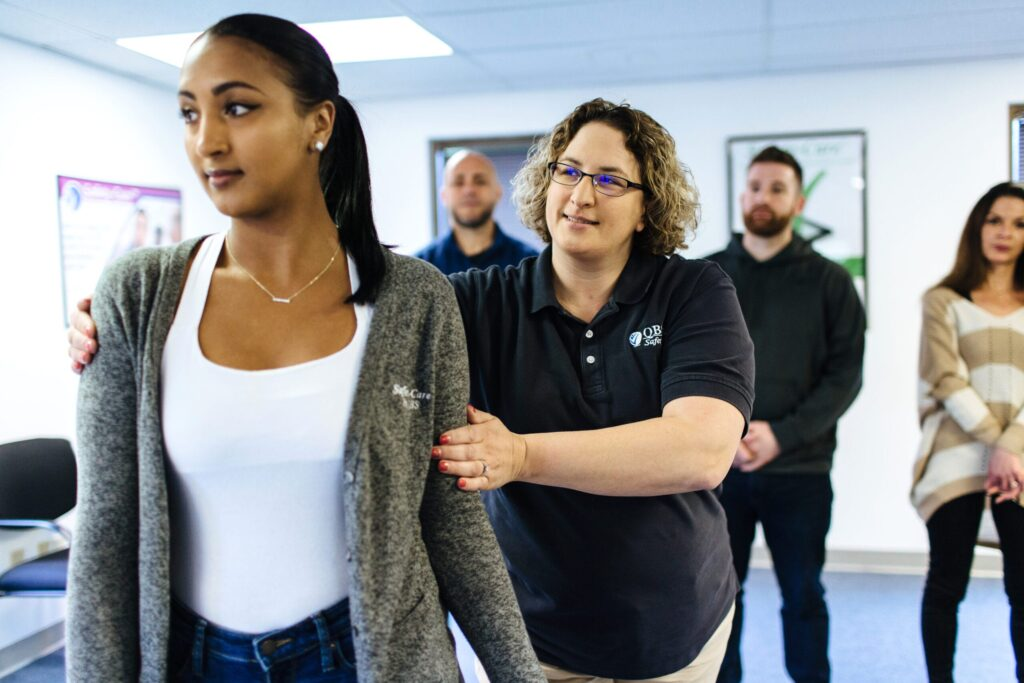Michigan House Bill 5417 – Use of Restraint and Seclusion for Emergency Situations In Schools
House Bill 5417 limits the use of restraint and seclusion in schools to only under emergency situations to ensure the safety of students and others present. The bill directs local school boards to develop policies and procedures to limit restraint and seclusion and identify key personnel to respond to such situations.

.png?width=88&height=95&name=Group%20137%20(5).png)


How to Implement Safety-Care?
1. Register for a Safety-Care Trainer class or call us to request a closed session for your organization. We regularly conduct classes in all 50 states and Canada.
2. Complete your class to become a certified Safety-Care Trainer for your organization. We bring you to fluency using an errorless teaching methodology.
3. You train and certify your staff in Safety-Care’s effective techniques.
4. Our Master Trainers are available by phone, email, or video to help your organization with any questions or concerns while using or implementing Safety-Care.

Legal Requirements
|
Summary: Effective: July 1, 2017 Last Updated: December, 2024 House Bill 5417 limits the use of restraint and seclusion in schools to only under emergency situations to ensure the safety of students and others present. The bill directs local school boards to develop policies and procedures to limit restraint and seclusion and identify key personnel to respond to such situations. |
|
Emergency seclusion is not be used any longer than necessary, and must end once a student has regained control. This should be limited to no longer than 15 minutes for an elementary school pupil or 20 minutes for a middle school or high school pupil. If an emergency seclusion lasts longer than 15 minutes for an elementary school pupil or 20 minutes for a middle school or high school pupil, all of the following are required: (i) Additional support, which may include a change of staff, or introducing a nurse, specialist, or additional key identified personnel. If an emergency physical restraint lasts longer than 10 minutes, all of the following are required: (i) Additional support, which may include a change of staff, or introducing a nurse, specialist, or additional key identified personnel. If emergency restraint or seclusion are needed, staff must involve the key personnel identified by the district and monitor for signs of distress. |
|
All efforts must be made to contact the parents or guardians of the student to notify them of the incident. Additionally, key personnel must be trained in the following;
How Safety-Care aligns: Numerous education organizations throughout the United States and Canada rely upon QBS and our Safety-Care training to provide their staff members with the training they need to help maintain a safe and healthy environment. Safety-Care provides a comprehensive, supportive approach to incident prevention, de-escalation, and management. Your Staff will learn practical strategies for helping students that use evidence-based practices consistent with PBIS (Positive Behavior Interventions and Supports) and ABA (Applied Behavior Analysis). |
Why Safety-Care?
Benefits & Differentiators
In addition to Safety-Care being highly cost-effective, you get:

Skills to effectively prevent, minimize, & manage behavioral challenges with dignity, safety, & the possibility of change

Decreases in staff and patient injuries and reduction in restraint & seclusion time

Instructional procedures based on decades of evidence-based research & compatible with ABA, PBIS & reinforcement-based environments

Customizable program for your setting, staff & clientele, with a strong focus on preventative via non-intrusive, replacement behaviors

Extremely rigorous standards grounded in errorless teaching methodology

Small, intimate class sizes backed by unlimited support & resources
How Is Safety-Care So Effective?
A Genuine Focus on Implementing & Managing Positive Behavioral Skills
Proactive, environmental management recommendations
Understanding of evocative effects of staff behavior
In-depth analysis of antecedents and proactive antecedent interventions
Evidence-based reinforcement procedures
Required competency in de-escalation skills
Humane, non-invasive touch and QBS Check™ strategies
Evidence-based teaching procedures
Applicable to a wide array of settings, conditions & challenging behavior





